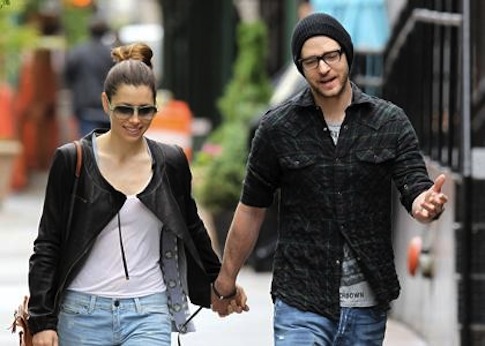
As if we needed more examples to demonstrate that ‘the digital’ & ‘the physical’ are part of the same larger world, it seems there’s no end to the applicability of demographic metaphors to trends in social media. I wrote about App.net and “white flight” from Facebook and Twitter last month, so you can imagine how my head broke on Monday when I first heard about “New MySpace.” My first question—after, “wait, what?”—was, “Is this like when the white people start moving back into urban cores to live in pricey loft conversions?”
I didn’t do a detailed overview of danah boyd’s (@zephoria) work on MySpace, Facebook, and white flight last time, so I start with that below (though I recommend that anyone interested in this topic check out boyd’s very readable chapter in Race After the Internet, which you can download here [pdf]). I then look at some of the coverage of New MySpace this week to make the argument that there are some strong parallels between the site’s impending “makeover” and the “urban renewal” efforts sometimes called gentrification or regentrification.
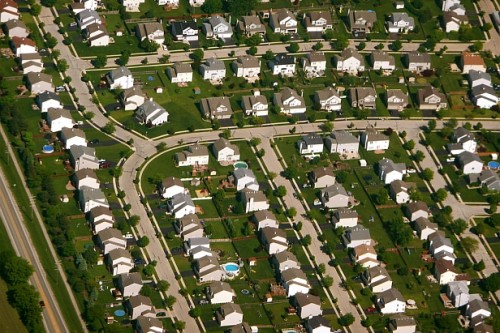
Myspace, Facebook, and White Flight
In a nutshell, boyd’s argument is this: 1) though the migration of many young people from MySpace to Facebook that began around 2006 was not explicitly about race or class, race and class factors both strongly shaped those shifts; 2) the ways social media users and journalists alike talked about MySpace and Facebook during that time mirrored the ways people talked about the city and the suburbs during white flight; 3) drawing the parallel between white flight and social media white flight illustrates that social divisions are reproduced in online interaction, and are not in fact magically erased by the Internet’s technoutopian magic dust (my term).
Boyd describes how, over the 2006-2007 school year, the young people she was studying began to self-sort across MySpace and Facebook. 2006 was when Facebook first became available to high school students; it’s also important to remember that MySpace (which began based around music and nightlife culture) was getting further onto parents’ bad side through media hype about sexual predators, whereas Facebook (which was at first offered only to students at the most elite universities) was associated with the middle-class ideal of attending a four year college. Slowly, a pattern began to emerge: white and Asian students, more affluent students, and more ‘mainstream’ students were more likely to join or migrate to Facebook, while black and Latina/o students, less affluent students, and more ‘subcultural’ students were likely to join or keep using MySpace:
What distinguishes adoption of MySpace and Facebook among American teens is not cleanly about race or class, although both are implicated in the story at every level. The division can be seen through the lens of taste and aesthetics, two value-laden elements that are deeply entwined with race and class. It can also be seen through the network structures of teen friendship, which are also directly connected to race and class. And it can be seen through the language that teens – and adults – use to describe these sites, language like Kat’s that rely on racial tropes to distinguish the sites and their users. The notion that MySpace may be understood as a digital ghetto introduces an analytic opportunity to explore the divisions between MySpace and Facebook – and namely, the movement of some teens from MySpace to Facebook – in light of the historic urban tragedy produced by white flight. Drawing parallels between these two events sheds light on how people’s engagement with technology reveals social divisions and the persistence of racism.
Boyd observes that the language people used to describe MySpace and Facebook (as well as MySpace and Facebook users) closely mirrors the language people use to talk about ‘the inner city’ and the suburbs. Facebook was safe and protected; MySpace was dangerous and full of predators. Facebook’s stark one-size-fits-all layout (the digital equivalent of suburban tract houses) was “clean,” while infinitely customizable MySpace profiles were “ghetto” and covered in “bling”—and, later, the digital graffiti that spammers leave on abandoned profile pages. As boyd points out, “while style preference is not inherently about race and class, the specific styles referenced have racial overtones and socio-economic implications. In essence, although teens are talking about style, they are functionally navigating race and class.”
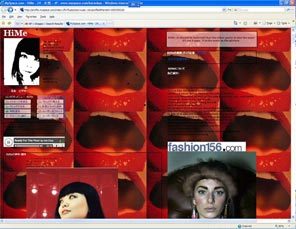
Facebook users were also more likely to denigrate MySpace and MySpace users. Not everyone on MySpace liked Facebook’s un-customizable layout, but Facebook users “argued that the styles produced by MySpace users were universally ugly” (emphasis mine). Facebook users described themselves as “cultured,” but described MySpace users as “lower class” and “more likely to be barely educated and obnoxious.” By 2009, ‘everyone’ was supposedly on Facebook, while ‘no one’ was still on MySpace—even though the sites still had about the same number of visitors. It’s not that no one was still on MySpace; it’s that, thanks to the strong pull of network effects, people who were not on MySpace themselves were far less likely to know people who were on MySpace. In boyd’s words, “The network segmentation implied by a ‘digital white flight’ also helps explain why, two years later, news media behaved as though MySpace was dead. Quite simply, white middle-class journalists didn’t know anyone who still used MySpace.”
Boyd admits that the white flight metaphor is not a perfect fit for the racialized migration of some users from MySpace to Facebook, and acknowledges as well that
Given the formalized racism and institutionalized restrictions involved in urban white flight, labeling teen movement from MySpace to Facebook as “digital white flight” may appear to be a problematic overstatement. My goal is not to dismiss or devalue the historic tragedy that white racism brought to many cities, but to offer a stark framework for seeing the reproduction of social divisions in a society still shaped by racism.
And there is a lot to be gained by looking at these shifts in usage through the lens of white flight. I want to highlight in particular the point that individual actions and choices are not race- or class-neutral just because individuals do not believe or feel themselves to be race- or class-motivated. As boyd explains,
To the degree that some viewed MySpace as a digital ghetto or as being home to the cultural practices that are labeled as ghetto, the same fear and racism that underpinned much of white flight in urban settings is also present in the perception of MySpace. The fact that many teens who left MySpace for Facebook explained their departure as being about features, aesthetics, or friendship networks does not disconnect their departure from issues of race and class. Rather, their attitude towards specific aesthetic markers and features is shaped by their experiences with race and class (emphasis mine).
In other words, before you’re tempted to cry out in indignation, “But I’m not racist,” remember that you don’t have to be thinking overtly racist (or classist) thoughts for your actions to have racialized or class-related implications and effects. Okay? Okay.
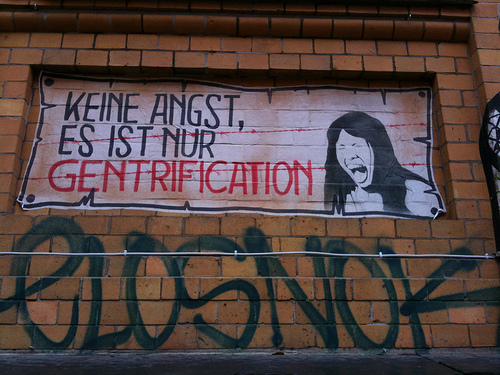
(Re)gentrification
Since many definitions of “regentrification” redirect to “gentrification,” I need to take a second here to clarify some terminology. I’ve gone on about the definition of ‘gentrification’ before, but the here’s the nutshell recap. Technically speaking, “to gentrify” is a transitive verb; it is something someone does to something or someone else, namely “renovate and improve… so that it conforms to middle-class taste,” or, in the case of a person or lifestyle, “make… more refined or dignified.” By denotation ‘gentrification’ is a class-based phenomenon only, but when people use the word ‘gentrification’ to talk about something going on in a neighborhood, they more often than not mean that more white middle-class people are moving into that area. By connotation then, ‘gentrification’ takes on both race- and class-based meanings. I think this is intensely problematic, but I don’t have a good way around it at the moment (and would appreciate suggestions!).
The word ‘gentrification’ can also have either positive or negative connotations, depending on context and the intentions of the speaker; sometimes it’s conflicted, and carries both at the same time. One exception, however: if ‘gentrification’ appears anywhere alongside a reference to ‘hipsters’, it is almost always meant in the negative sense. (It’s Hipster Day here at Cyborgology!)
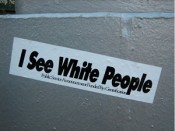 “Regentrification,” on the other hand, doesn’t seem to have a dictionary meaning of its own, but I’ve observed that—like ‘gentrification’—‘regentrificaton’ has strong racial connotations; it seems almost always to be used to mark an influx of white middle-class people specifically. ‘Regentrification’, however, seems to have more strongly polarized connotations. For sociologists and long-time neighborhood residents, for instance, ‘regentrification’ tends to be a critical term, as when a former Georgia State Representative says, “Regentrification, that’s just a nice word for taking black folks’ property.”
“Regentrification,” on the other hand, doesn’t seem to have a dictionary meaning of its own, but I’ve observed that—like ‘gentrification’—‘regentrificaton’ has strong racial connotations; it seems almost always to be used to mark an influx of white middle-class people specifically. ‘Regentrification’, however, seems to have more strongly polarized connotations. For sociologists and long-time neighborhood residents, for instance, ‘regentrification’ tends to be a critical term, as when a former Georgia State Representative says, “Regentrification, that’s just a nice word for taking black folks’ property.”
To some conservatives and real estate people, on the other hand, ‘regentrification’ is basically synonymous with “revitalization,” a term used to highlight that an area “had a hayday [sic] once, and is again building to that goal.” When used in this sense, ‘regentrification’ is seen as an unquestioned good for ‘the neighborhood’—which evidences a framing of “neighborhood” that may not include the actual residents, one in which it is “the area” that suffers from the effects of poverty rather than the people who live there. ‘Regentrification’ has also sometimes been used to describe a kind of meta-gentrification, which occurs when “the storm troopers of gentrification” (artists and other subcultural groups) are priced out of a neighborhood by the upper-middle class after a stint spent answering a decaying city’s siren song: “come hither; we’ve got coffee shops in our ruin porn.”
For the purpose of this post, I’m going to use the term (re)gentrification to order to reference the combination of ‘gentrification’ and ‘regentrification’, and to signal three things.
- The first is that (re)gentrification is part of the legacy of white flight, something embraced by those middle-class whites who reject suburban living because they seek something more “authentic” than tract houses, because they’re ‘nostalgic’ for older architecture from a different time, because they’re “settling down” later and want to be closer to nightlife longer, or because they just hate that long suburban commute.
- The second is that (re)gentrification can have negative effects (including, but not limited to, the displacement of current residents), and may not be welcomed by the people who lived in an area before (re)gentrification began.
- The third is that (re)gentrification, when cast as a good thing, tends to treat ‘the neighborhood’ or ‘the area’ as something distinct and separate from the neighborhood or area residents, and to privilege what people in positions of power (city officials, real estate developers, etc.) say is “good” for the neighborhood rather than prioritize resident-led neighborhood improvements.
New MySpace
First, in case you missed it, here’s the video demo of what New MySpace will supposedly be like. (Beginner Sociologist Exercise: count the women and people of color shown as you watch the video; Advanced Sociologist Exercise: count the women who aren’t sexualized, and the people of color who aren’t entertainers; Both: compare with the front page for ‘old’ MySpace, which does still exist for now). The most common reaction to New MySpace from the not-so-social media sphere seems to be twofold: 1) that New Myspace looks a lot like Pinterest, and 2) that a “bringing sexy back” joke is just dying to be made, given Justin Timberlake’s prominence both in the demo video and behind the scenes as an investor.
Aesthetics aside, my personal take—which is perhaps unsurprising, given what I’ve written about previously—is that New Myspace is aspiring to be your one-stop Facebook and Spotify shop, with some Twitter-style fetishization of celebrity thrown in for good measure. The interesting thing here is that, while New MySpace seems to be specializing in big-name celebrities, MySpace has historically been home to a wide range of smaller-name, unsigned music acts—and as such has built up a substantive library of files that most other music services don’t have; in fact, MySpace holds nearly three times as many titles overall as does Spotify. This means that MySpace’s strength as a music-oriented site or service is in an area that I think is one of Spotify’s biggest weaknesses: bands that are obscure and/or unsigned. This also gives New MySpace a lot of potential leverage in terms of subcultural capital; whether all this raw material for subcultural capital is part of MySpace’s ‘historic legacy’ or just (re)gentrification bait is…a grey area that I’ll develop a bit more below.
But anyway, let’s take a closer look at what tech commentators are saying about New MySpace. Slate’s Will Oremus states that New Myspace is “a step further away from its roots as a one-stop social network for the masses… Instead, it’s going to focus more narrowly on becoming a social home for musicians, artists, celebrities—and their fans.” Oremus appreciates the irony of the fact that he finds New MySpace to be “cleaner, simpler, [and] more aesthetically appealing” than Facebook, but he’s so eager to denigrate “the masses” of (present) MySpace that he’s forgotten how foundational music and music culture were to old MySpace (a point on which boyd elaborates in her chapter).
The Huffington Post’s Dino Grandoni, on the other hand, recognizes that “Artists, in particular musicians, were among the first to pioneer the social network before it reached wide popularity — and among the last to stay after Facebook overtook Myspace in unique visitors in 2008,” but he too emphasizes how “sleek,” “sexy,” and “beautiful” New MySpace looks, in an unspoken comparison is to the user-modified profile pages of old MySpace. Rebecca Cullers at AdWeek agrees that New MySpace is ‘bringing sexy back’; she finds that sexiness to be a welcome improvement over “the glitter unicorn backgrounds that made the interface impossible to view or navigate,” and “the crappy logo that we all knew was just lipstick on a pig.” The Associated Press, too, thinks New MySpace is “beautiful,” and speculates that “[New] Myspace wants to win the hearts and minds of tech-savvy hipsters.” “The video promises that Myspace will start ‘totally from scratch,’” the AP adds, “as if trying to shed its former self.”

It seems some things haven’t changed since boyd was doing her research; the consensus here is that old MySpace was ugly and unsophisticated, present MySpace is irrelevant and unworthy of attention, and New MySpace is sexy, savvy, modern, clean, and clearly aesthetically superior. If old/present MySpace is a run-down urban ghetto, New MySpace is a set of slick LEED-certified postmodern condos; Facebook, on the other hand, stands to be cast as a soulless sea of split-level ranch homes sprawling across the flatland plains of LowerMiddleClassville.
What really got me in the coverage of New MySpace, however, was Bob Moon’s segment on the American Public Media show Marketplace. I’m reproducing the last chunk of it below, because it’s worth taking a closer look at:
Myspace is aiming to refashion itself as a slick destination for emerging musicians to get exposure and stay in touch with their fans. Sandoval doesn’t rule out a slim chance the strategy could work, mostly thanks to Justin Timberlake’s contribution as an “entertainment phenomenon.” As a musician, actor and TV comedy star, Timberlake could reach multiple audiences and bring the site a lot of attention, says Sandoval. “You never know what somebody like him can do.”
At the research firm GigaOM, tech analyst Michael Wolf says Myspace faces an uphill battle against Facebook. He also points out that Facebook’s popularity means it can’t make changes as dramatically as Myspace, which has only a tiny fraction of Facebook’s global audience.
“You don’t want to alienate that large installed user base,” Wolf says of Facebook. “That’s one of the things that Myspace has in its advantages. They can take swings for the fences.”
In the end, that may be all the planned redesign turns out to be — another swing at saving Myspace. This is the site’s fourth major overhaul, and CNET’s Sandoval says if it weren’t for the star power of one of its backers, most people would just write Myspace off — as many already have.
There are three things I want to highlight here in order to make the case for New MySpace as (re)gentrification:
First, remembering that old/present MySpace is the urban ghetto, we have Justin Timberlake as the rich developer (and possible ‘white savior’) who’s going to swoop in and save ‘the neighborhood’ from decay (irrelevance, business failure) by rebuilding it in his own image—by (re)gentrifying, by remaking MySpace into a site geared more explicitly toward the urban upper-middle classes. No longer will MySpace be blighted by bling; the decaying profiles of (present) MySpace will be razed so that New MySpace can start “totally from scratch” (as the video says), can somehow be reborn as simultaneously sexy and safe, both edgy and clean.
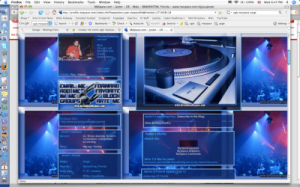
Second, MySpace is planning to remake itself by appealing to musicians and music communities (the “storm troopers of gentrification”) in the hope of triggering network effects once again—but this time to bring people back into MySpace. Though many musicians are still active on (present) MySpace, 60% of them linger there in the hope of being discovered; as anyone who’s ever been part of a music scene can tell you, most musicians are not living the glamorous Life of Timberlake. The existing batch of bands may have some subcultural appeal, or appeal to members of their members’ own racial and/or socioeconomic groups, but the user base MySpace is trying to recapture with ‘New MySpace’ is in large part the more affluent group that left during the ‘white flight’ phase. These aren’t the people who are struggling to ‘make it’ as musicians; to quote one of boyd’s informants, they’re the people who go to “the other side of the tracks” for fun, but who “wouldn’t want to live there.” They might like the idea of musicians and music, but they don’t want to live in those so-called ‘up and coming’ or “transitional” neighborhoods where musicians live in group houses next door to ‘ethnic families’; they want to be close (but not too close) to an excitement that’s tamed and contained, a wild night out and a safe stumble home.
Third—and I think this is the most telling part—look closely at what the commentator from GigaOM has to say about the (present) MySpace and Facebook user bases. Facebook’s user base is not only still large, it is also still valuable; Facebook can’t afford to make drastic changes because it would risk losing something of worth. MySpace, on the other hand, can take risks—can “swing for the fences”—because it has nothing to lose; its user base is not valuable, does not have worth. How much worse could it get for MySpace, really?
Stop for a moment and consider the fact that—although another GigaOM writer couldn’t begin to fathom why this might be the case—(present) MySpace had more active users than either Tumblr or Google+ in January of 2012. In 30 days spanning January and February of 2012, (present) MySpace added a million new users. The “tech-savvy” may not be paying attention to (present) MySpace, but that doesn’t mean the site is dead; in fact, it looks like MySpace is slowly growing. Recall that, as boyd points out, it’s not that “no one” is on MySpace anymore; it’s that most middle-class white journalists (and their friends) are not on MySpace anymore. Shocking but true: there is a whole wide world outside white middle-class journalists’ social circles.
True, MySpace still has only a fraction of the users that Facebook has, but does that make its roughly 262 million person user base expendable and not worth anything? It seems that while there are still plenty of people on (present) MySpace, they aren’t the people who matter—at least to the tech-savvy media community. The people who “matter” are the ones who left between 2006 and 2009, the ones New MySpace is trying to entice back in order to help (re)gentrify the neighborhood and ‘revitalize’ the site; after all, “most people” would write off (present) MySpace if it weren’t associated with “Mr. Sexy Back” himself. Here, ‘most people’ codes not only for “most of the people Bob Moon knows,” but the people who matter most to advertisers: middle-class and affluent mainstreamers who have enough discretionary income to spend money on concerts, nightlife, and (yes) $5 lattes and cupcakes.
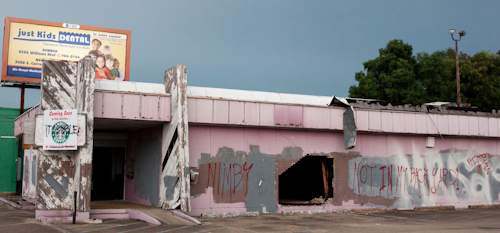
Conclusion
I think it’s safe to say that, yes, New Myspace does look an awful lot like (re)gentrification. Though present MySpace is far from abandoned, it is frequently written off because 1) middle-class white journalists don’t usually know anyone who’s still part of MySpace’s more working class and more racially diverse user base, and 2) its existing user base isn’t ‘valuable’ to advertisers. Just as a poor neighborhood frequently gets neglected by city government because it doesn’t bring in enough tax revenue, (present) MySpace’s days are numbered because its user base isn’t seen as a valuable asset. A ‘revitalized’ neighborhood brings in more tax revenue; a (re)gentrified New MySpace will bring in not only more user-data and attention, but user-data and attention from the ‘right’ kinds of users—or so investors in the site are hoping.
I’ll stop here and state the obvious: yes, MySpace is a business. It is not a city government. It has no obligation to care for or to care about the users of (present) MySpace, and getting displaced out of a social networking site is not exactly like getting priced out of a neighborhood. Still, we should be asking what will happen to the existing communities on present MySpace—and we should ask why this issue is so completely absent from the glossy New MySpace demo video. Social media is not a separate world; it is a part of this world and, as boyd argues, the inequalities that get reproduced in social media are some of the same inequalities that we must still work to address.
Whitney Erin Boesel (@phenatypical) still has a profile on MySpace, but admits she had to have her password reset in order to log in and poke around for this post.
Justin Timberlake out for a stroll photo from http://elitedaily.com/elite/2012/jessica-biel-talks-engagement-justin-timberlake/
Tract houses photo from http://grist.org/article/2010-05-11-bright-flight-and-the-urban-suburban-switcheroo/
Red MySpace profile photo from http://seattletimes.com/ABPub/2008/09/26/2008207118.jpg
Gentrification graffiti photo from http://blog.inpolis.com/2011/06/06/if-everything-is-gentrification-then-what-is-gentrification/
“I see white people” photo from http://gothamist.com/2009/12/14/is_gentrification_a_good_thing.php
PeeWee Herman “Sexy Back” image from http://cheezburger.com/6056698880
Hipster Justin Timberlake photo from http://musicodor.blogspot.com/2010_10_01_archive.html
Blue MySpace profile photo from http://stevengrahmann.xanga.com/
Starbucks in New Orleans Lower Ninth Ward photo by Whitney Erin Boesel. Used with permission.

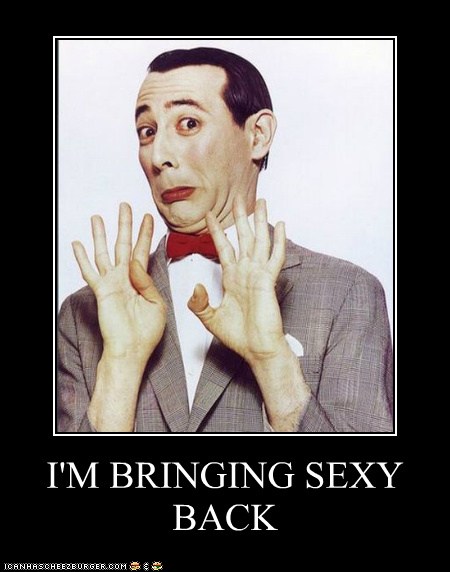
Comments 8
Redesigns as Temporal Processes: the case of Myspace » Cyborgology — September 28, 2012
[...] Whitney Erin Boesel’s most recent post addressing the potential “regentrification”... helps to illuminate a further point that we should bear in mind whenever we’re considering the implications of a site – or an interface – redesign/reboot: it’s not a sweeping, instantaneous change that’s rooted entirely in the present, and its users almost never perceive it that way. This can help to explain the frequent emotional intensity with which users often respond to redesigns. [...]
Roger Talbott — October 1, 2012
I can't decide if this very well thought out but ultimately specious exercise is as offensive as it is ridiculous. I would be interested to see if whites were, in fact, underrepresented on myspace as this seems to imply. The reason people left myspace for facebook is much simpler than you suggest. Facebook was a better tool for social media interaction, and it wasn't inundated (at the time) with whole page in your face ads for Transformers. Its the same reason that the use of google chrome is also associated with college educated "elites". Whereas internet explorer is used by grandma and bums at a library terminal. Its not race or even economics, its that those people, be they white or black, rich or poor, have a lower tolerance for bullshit because they know what they're doing on the internet. Its also worth pointing out that white flight is an organic process that results when there are culture clashes in a geographic area these culture clashes are the product of the people that live in that area. Myspace's cultural clashes were the product of their own ad sales and marketing departments.
New Myspace: Bringing (Re)Gentrification Back? » Cyborgology « i453ethics — October 1, 2012
[...] New Myspace: Bringing (Re)Gentrification Back? » Cyborgology. Share this:TwitterFacebookLike this:LikeBe the first to like this. Tags class, race, [...]
The New MySpace Invites Old Questions « Ma'at — October 25, 2012
[...] Thus, as Cyborgology blogger, Whitney Erin Boesel brilliantly articulated in a recent post, the launch of the “new” MySpace can be viewed as a virtual form of (re)gentrification that [...]
Episode #17: DragonComNetCom | Pretty Broken — December 12, 2012
[...] New Myspace: Bringing (re)Gentrification back? [...]
What was your Twitter feed like after the Newtown shooting? - Kirsty Park — December 21, 2012
[...] that Myspace would be relaunched as a sexy, new social network? There’s an excellent piece here that dissects that move and what it means in terms of race and class. One of the things they [...]
Toxic: on race, gender, and resilient labor on social media » Cyborgology — February 17, 2014
[…] on Whitney’s work on MySpace and gentrification, Park argues […]
Toxic: on race, gender, and resilient labor on social media — August 13, 2014
[…] difference between gentrification and resilience once I explain Park’s argument. Building on Whitney’s work on MySpace and gentrification, Park argues that Twitter is the new MySpace: a “dangerous” […]